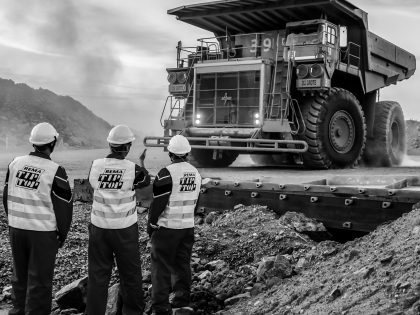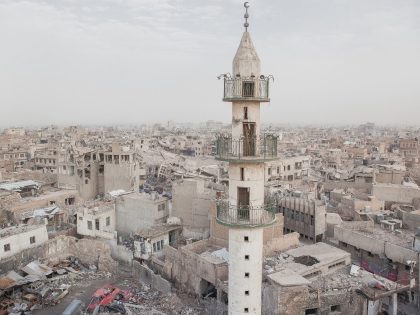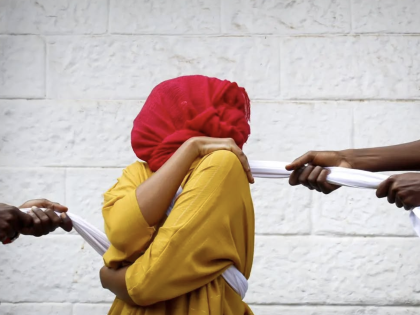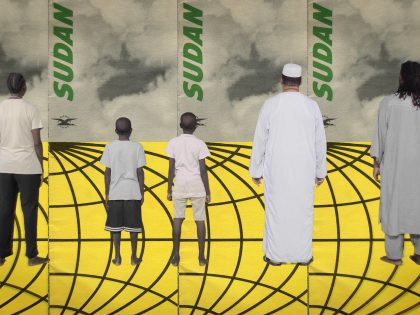Lagos, the city of divides

Makoko looking towards Lagos.
Lagos, is the only city in Nigeria worthy of being described as a human potpourri. No crevice of the city is left unaffected by the flavour brought by the multifarious peoples who comprise the city’s teeming populace. Whatever beauty or redeemable qualities can be salvaged from the Nigerian contraption can be seen in Lagos. Conversely, also, the inequality and inequity which have come to characterise Nigerian society permeate Lagos. But this mixture of humans is increasingly divided spatially. This has its costs.
Apart from the economic prospects it offers, Lagos has a highly alluring veneer of beauty, culture and sophistication. There’s always something for everyone, or as Madonna sang in the nineties, you only see what your eyes want to see. This is where the successive government regimes in Lagos and the elites within the state share a common interest, apart from the cornering of the state’s largesse: making the ‘’unwanted’’ invisible. Successive governments in the state have been more preoccupied with ‘’beautification’’ projects in public areas than trying to alleviate the living conditions of impoverished families. The famous Lagosian reggae artist, Majek Fashek painted, for me on a personal note, the most resonant comparison of the divide in Lagos when he sang, some decades ago, about his first time visiting the U.S.A. and alighting in the city of New York. Very much like his beloved Lagos, (or ‘Las Gidi’ as he fondly refers to the city as, a portmanteau derived from Las Vegas, to reflect what Majek saw as the many commonalities between Lagos and Las Vegas in terms of the embrace of the culture of hedonism and the existing underbelly of dire poverty and crime masked by the neon lights of artifice) he was befuddled to find that contrary to what he had previously imagined of America as some utopic Shangri-la, it had homeless people on its streets.
This sharp contrast in experiential perspective by the inhabitants of Lagos also has a spatial face to it. The Third Mainland Bridge helps to provide a physical marker to compliment the social barriers already erected in the minds of its denizens. Living on ’’the island’’ in Ikoyi and Lekki is considered preferable to living or mingling on the mainland. Then, a fleeting camaraderie, of sorts, is found in affirming a sense of superiority over those from surrounding states. This behaviour lends strong credence to Paulo Freire’s theorisation in the seminal ‘’The pedagogy of the oppressed’’ that the oppressed not only respect and fear their oppressors but also wish to occupy their position as oppressors in future.
The sad reality, however, is that, regardless of where one lies on the socio-economic spectrum in Lagos, we all suffer to some degree. The have’s, the yet-to become have’s and the have-not’s are unable to avoid the pothole-ridden roads of Lagos. The wealthy or those who cannot afford it pretend they can avoid the roots of the problems plaguing the Nigerian society by papering over the cracks, so we see them buy bigger cars to ply the bad roads only to be accosted by highway robbers. They retreat into their garishly furnished houses but live in constant fear of the outside world, knowing that many around them live in contrasting paupery. That is the cost of the divide. The barrier set up to keep the have-not’s away, to render them invisible so as not to ruin our aesthetic of comfort and ideals of beauty ends up becoming a prison to the wealthy.
It has transformed the socio-cultural landscape of Lagos into a spin-off of the zombie series The Walking Dead, where the rich keep on moving in an almost-peripatetic fashion to areas with higher insularity from the working classes. So the island mainland divide no longer suffices, they retreat to Ikoyi, then to Lekki, then to the ultra-exclusive Banana Island, where a sizeable token fee is charged before non-residents can gain entry to take a look around. The spatial paradox of this is that the divide is in fact a façade because in actuality it is an eliding spectre which try as they might, the moneyed classes cannot escape from.



















